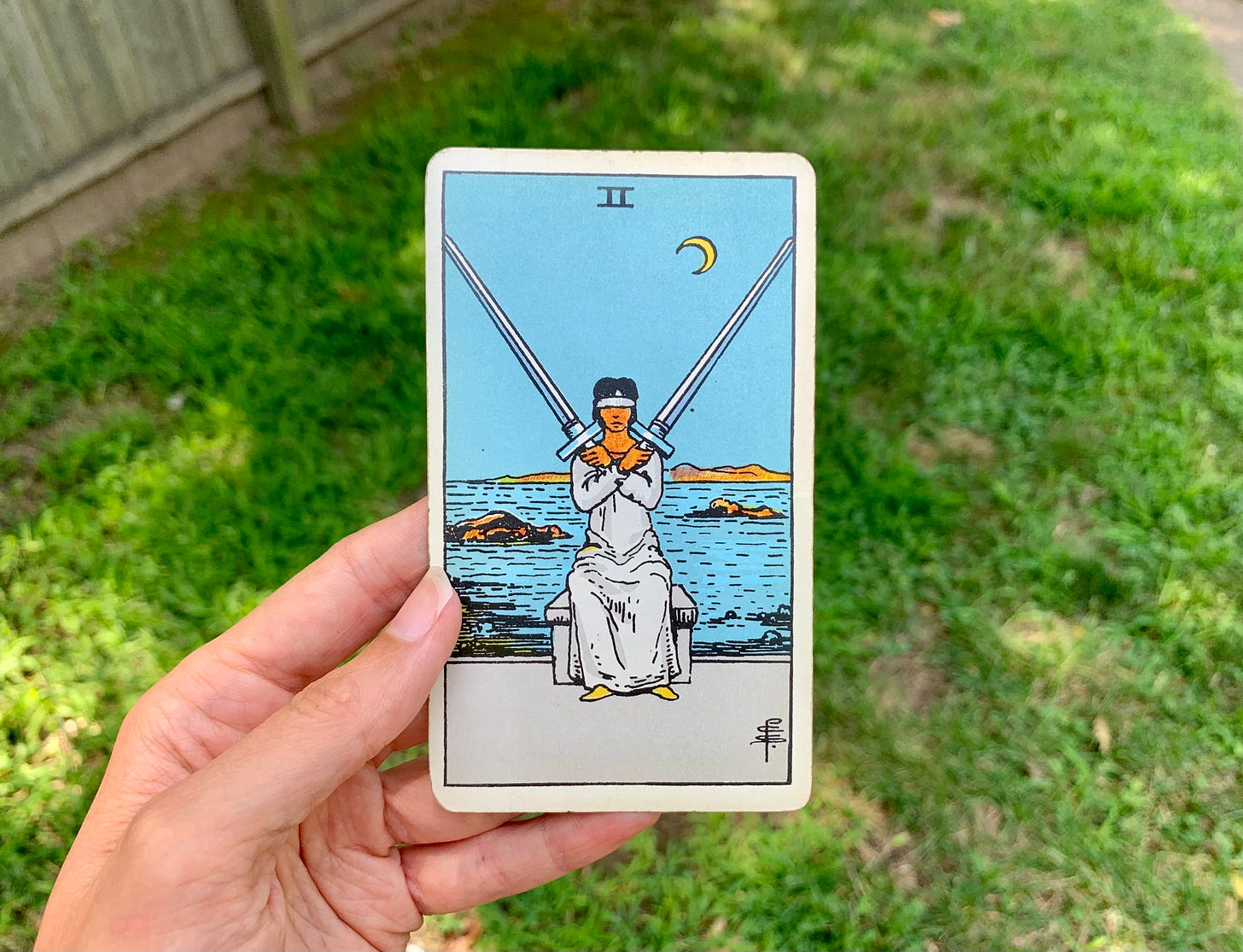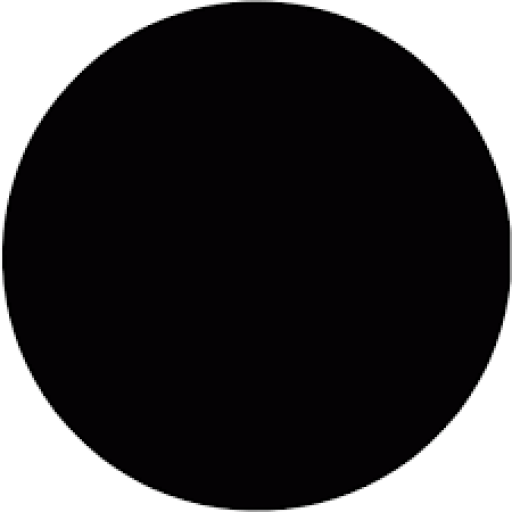
Image description: A hand is holding a tarot card, Two of Swords by Pamela Colman Smith from the Rider-Waite-Smith Tarot. Behind the card is green grass and the edge of a wooden fence. In the card, a person dressed in gray with a blindfold on and yellow shoes is seated on a concrete block holding two large swords, crossed over their chest. There is water behind them, and a crescent moon.
I’ve been asked twice in the last several weeks how I work with and think about synchronicity. The truth is I really don’t.
The prefix ‘synch’ suggests sameness in a way that feels at odds with my interest in difference. Difference as in philosopher Kelly Oliver’s notion of love:
“Love is…an ethics of otherness that thrives on the adventure of otherness [and] requires a commitment to the…nurturing of difference.”
I’m less interested in the accordance of rhythms, and more in what happens when two beats are playing at the same time and clashing.
So I haven’t been working much with the idea of synchronicity. But I have been working with the idea of intensity, which feels related.
Intensity is the name we give for the tension that happens when contradictory forces confront one another, and no one dominates or submits.
Intensity yields potential. It’s a quality from which something miraculous can happen. Something never before seen. Something that could not have happened if one force took over and the other gave way.
(I’m drawing from—and oversimplifying—the work of philosopher Brian Massumi.)
Potential is an interesting thing, too. It has roots in words that mean “to stretch.” When I feel stretched in some way, I often say “it’s intense.”
I think these ideas can be useful when thinking about the intensity of big feelings.
Big feelings are often born from the confrontation of forces.
A need to be seen clashes with an unresponsive environment.
A force of degradation descends upon something indisputably precious.
These encounters often generate intense feelings.
I’ve been considering collaboration a lot lately too, and have found these ideas about intensity and potential useful. Collaboration is also a meeting of forces and—to the degree no one is dominating or submitting—can also be quite intense.
Collaboration involves doing work together, across and with difference.
Ideally space is made for all involved so that collaboration is like love; an adventure in otherness. Collaboration might even be a synonym for love, if we view love as an action.
This week in I pulled Two of Swords.
In the Thoth deck, Two of Swords is called Peace, which might seem a quintessential “other” of intensity.
In fact the card depicts the confrontation of forces—two swords crossing—and an intensity that occurs there.
The artist Freida Harris marked that point of intensity with a blue rose. An oddity. Something never before seen.
For Brian Massumi, potential exists in a realm where “what are normally opposites coexist, coalesce, and connect.” Intensity and potential are related.
At the point of tension where we bump up against difference there’s potential to stretch in new ways.
To bloom into something, other than what we have been.
Especially if we’re able to make room for the differences we encounter. Without anyone needing to dominate, or submit. I know I’m saying the same words over and over. It feels necessary.
I have an enduring desire to do deep work with others. I’ve been thinking a ton about intensity and potential, and about how these ideas relate to a relational value of collaboration.
One interpretation of Two of Swords that I read online said the card has to do with a view of the world as divided into binaries, or neat pairs of opposites.
This is visually represented by two swords in the shape of a cross signaling a choice between this way or that, but not both.
As I look at the card I start to wonder:
Am I thinking about collaboration in too binary a way?
I do tend to see certain ways of working as “truly” collaborative, and others as not.
Collaborative behavior might include factoring others’ wants and needs into decision-making processes, or being responsive to things that are shared.
Un-collaborative behavior would be things like unilateral decision-making, not taking responsibility for one’s actions, passivity or inaction.
I dissolve the collaborative/un-collaborative binary and begin to wonder if these varying modes of showing up are just different ways of working.
I start to notice that each way brings something unique. A contribution.
Inaction can be generative, for instance, or preservative. Like if you’re fermenting something.
Inaction can also be a space-making method; an invitation for those who aren’t used to taking up space to step into an opening. Or a way to let stirred up things settle.
I think there’s value in considering that people “show up” and collaborate in all kinds of ways. What if the person who can’t self-reflect and blames everyone for their problems is collaborating just as much as the one who seriously considers how their behavior affects others?
The first person’s contribution will likely clash with others’ needs for safety or accountability, but it contributes to the equation, nonetheless. The clash creates tension, and there’s potential there. If those involved can resist the urge to dominate or submit, there’s potential to move in ways they’re not used to.
I wonder if viewing the many ways humans show up in relationship as “collaborative” is a way to get past the familiar lamentation of others’ refusal to do whatever it is that we want them to do. What if we’re all collaborating in one way or another? We’re, co-laboring; working alongside one another. To live in the best way we know how.
Here are some questions I have:
What ways of collaborating do I want to stretch and grow into? What different styles of working in others might be supportive of (or hindering to) that growth?
What sorts of encounters—with oppositional forces or differences—might stimulate me to stretch in the directions I value, or to become other than what I have been?
I often struggle with difference which is why I think about it so much.
But I really want to honor all these weird ways of collaborating because we are all so different and that makes life exciting.
Plus I really do think love is the nurturing of difference.
To reckon with, accept and respond to the differences we encounter is often intense. It brings up a lot. It requires stretching. It might hurt or feel scary. It can be exciting.
You’re reading the Offering for July 30, 2023. This Offering is for paying subscribers only but if you feel moved to share it you have my blessing to do so, and my thanks.
See you next time. <3
